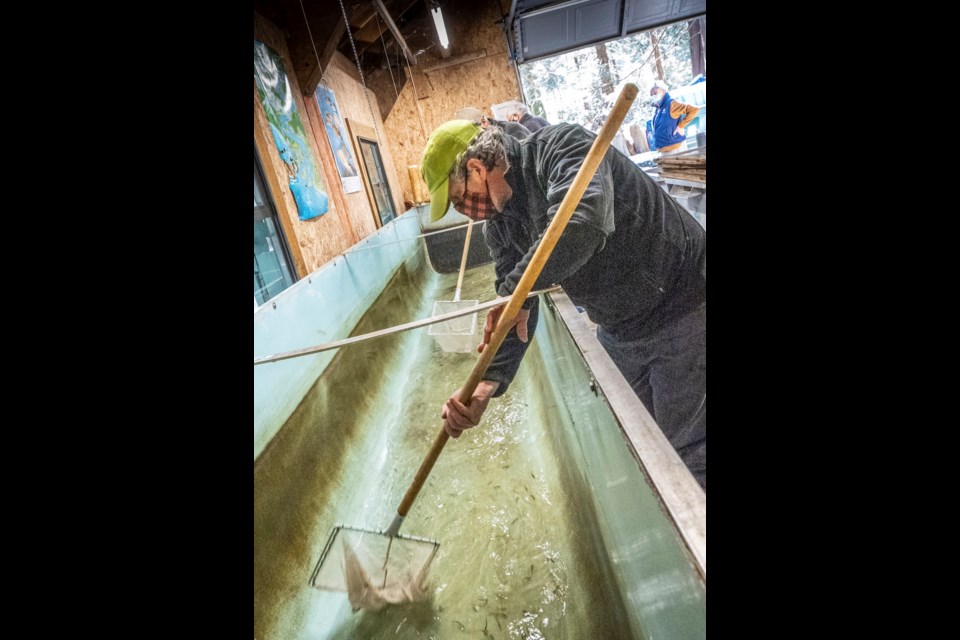A couple of weeks ago, on Earth Day, some of Terminal Creek Hatchery’s volunteers escorted Bowen’s 2021 graduating class of young chum salmon from the hatchery where they had grown from tiny eggs down to tidewater and their new life at sea.
Marolyn Anderson, Martin Clarke, Tim Pardee, Don McQueen and Barry Pynn netted the young salmon (known as fry) from deep in the hatchery’s giant tanks.
At the shore, the team tipped their pails to release approximately 70,000 fish into the shaded, shallow, and cool water of the Terminal Creek Lagoon. A further 30,000 were released into Davies Creek in Snug Cove. Each fish weighed roughly two-thirds of a gram (the weight of three toothpicks) and was about the length of your baby finger.
The fry spent from a few hours to a couple of days in the sheltered water of the Lagoon or Davies Creek. Then they ventured out to begin their life in the ocean.
Here, as young fry, they will spend several weeks near shore, hunting for food in the eelgrass beds of Mannion Bay, then further months in local waters before heading to the north Pacific.
Chum salmon spend about four years fattening up at sea before returning to the stream where they were born to mate and die.
Chum is the largest salmon species that spawns on Bowen Island. Individual fish are typically in the four to six kilogram range as returning adults.
Wildlife Club volunteers operate the Terminal Creek Salmon Hatchery and monitor the health of Bowen’s salmon bearing creeks and riparian areas. Bowen’s hatchery volunteers work under the supervision of Malcolm Wigham from the Fisheries and Oceans Canada (DFO) Salmon Enhancement Program.

-ivy-on-a-brick-wall.jpeg;w=120;h=80;mode=crop)

